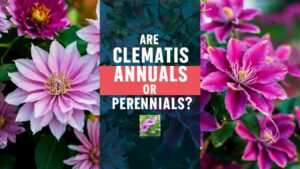In this comprehensive guide, we’ll explore the reasons why potted wildflowers are great additions to your home, the best species for container gardening, and a step-by-step approach to planting and caring for them in pots.
How To Grow Wildflowers In Pots
Choose The Right Pot To Grow Wildflowers
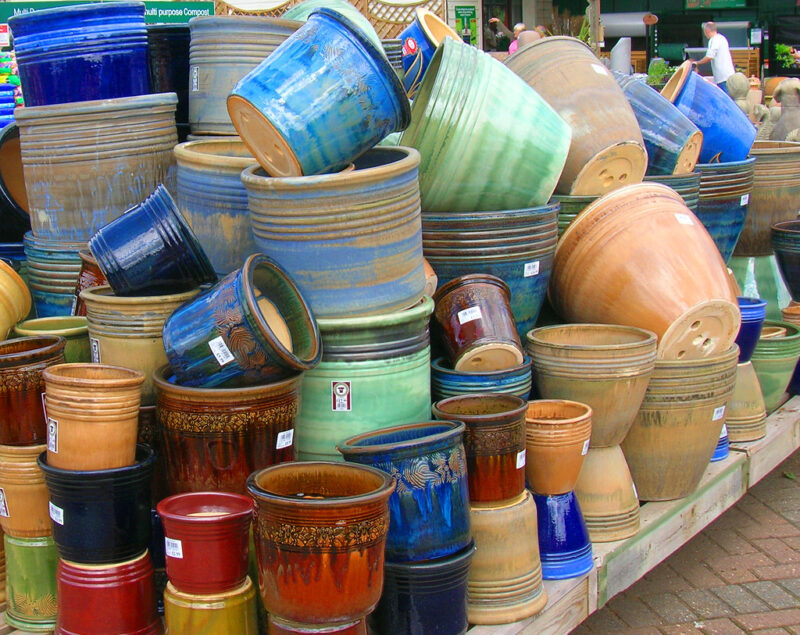
Selecting the appropriate pot is a crucial first step. Ensure that your chosen container has drainage holes at the bottom to prevent root rot, which can occur if water accumulates at the base. Opt for materials like terracotta, ceramic, or lightweight plastic that allows breathability while retaining moisture. The size of the pot should match the type of wildflowers you’re planting; generally, smaller varieties do well in 10 to 12-inch pots, while larger species may require 14-inch pots or bigger. Additionally, consider the overall aesthetic of the pot—choose containers that complement your outdoor decor for added visual appeal.
Select The Right Potting Mix For Your Wildflowers
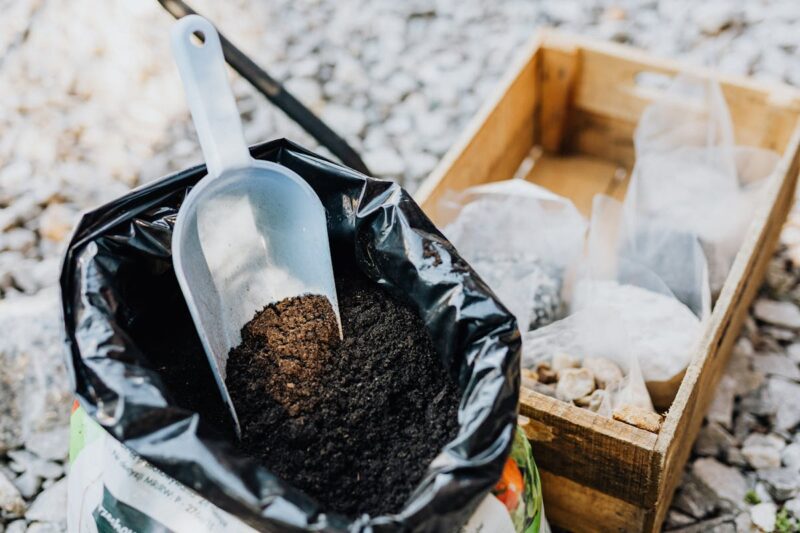
Choosing the right potting mix will set your wildflowers off on the right foot. Look for a lightweight, well-draining potting soil enriched with organic matter to ensure ample drainage and nutrients. A mix specifically designed for wildflowers provides the ideal pH and nutrient balance necessary for healthy growth. You can also create your own mix by combining quality potting soil, perlite, and compost to ensure your wildflowers receive the best care.
Pick The Right Wildflower Seeds

Choose your wildflower seeds based on your climate, preference for colors, and intended garden style. Many seed packets will indicate whether they thrive in sunny or shady conditions; be sure to read their descriptions carefully. Mixing an assortment of seeds can also create a dynamic display that results in prolonged blooming throughout the seasons. It’s valuable to choose native species for your area, as they will often be more resilient and adapted to local growing conditions, leading to successful gardening experiences.
Best Wildflowers For Pots
When choosing wildflowers for containers, selecting species that thrive in smaller spaces and can adapt to the potting environment is essential. Here are some of the best wildflower candidates for pot cultivation:
Cornflowers (Centaurea cyanus)
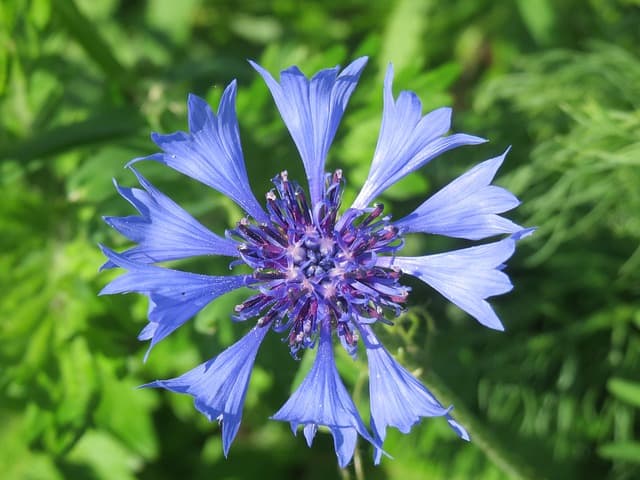
Cornflowers are known for their striking blue flowers and sturdy stems, making them perfect for pots. They bloom in summer and attract bees and butterflies, making them a favorite of pollinator gardeners. Cornflowers are also resilient and can tolerate poor soil, making them low-maintenance options for beginner gardeners. Their unique color can provide an excellent contrast when planted with yellows or whites, enhancing visual appeal.
Forget-Me-Nots (Myosotis)
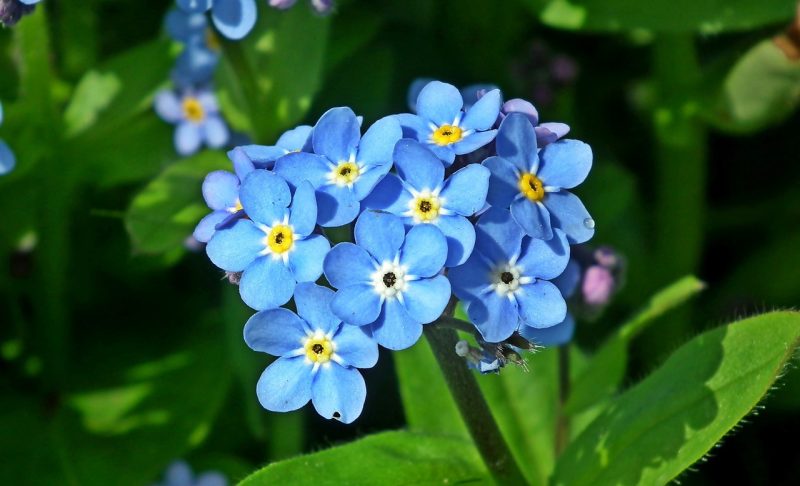
These charming little flowers feature bright blue blooms and have a delicate appearance that brings softness to gardens. Forget-Me-Nots thrive in partial shade, making them ideal for patios or balconies that don’t receive full sun. Their ability to spread quickly creates lush greenery. These flowers are also attracted to bumblebees, enhancing your local pollinator population.
California Poppies (Eschscholzia californica)

Famous for their vibrant orange petals, California Poppies are ideal for sunny spots and are drought-tolerant, making them an excellent option for pots. Not only are they stunning, but they also bring a joyful burst of color to your outdoor decor. Once they bloom, they create an eye-catching display that will brighten up any space. The ease of care makes them suitable for novice and experienced gardeners alike.
Oxeye Daisies (Leucanthemum vulgare)
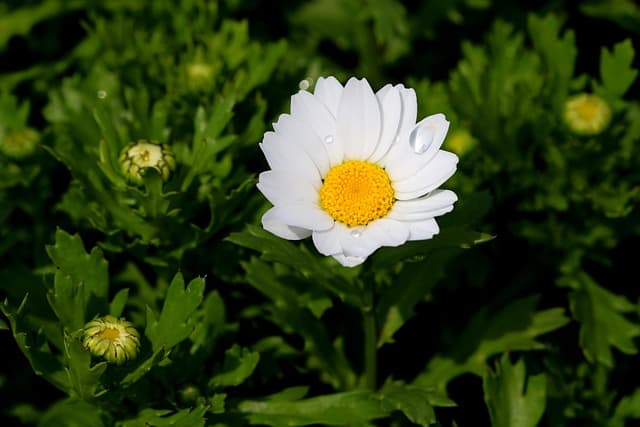
With their cheerful white petals and yellow centers, Oxeye Daisies bring a touch of classic beauty. They are easily adaptable to containers and bloom profusely, attracting butterflies. Their simple appearance adds charm and a sense of nostalgia, reminiscent of carefree summer days, bringing a classic touch to any display.
Sweet Alyssum (Lobularia maritima)
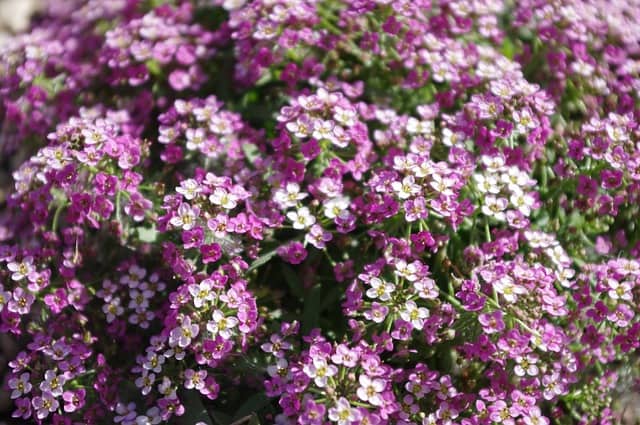
Sweet Alyssum’s tiny, fragrant flowers cascade over the edges of pots, creating a lovely, soft appearance. This delightful flower blooms profusely in spring and is an excellent choice for sharing sweet scents in your outdoor space or along pathways. Their low-growing nature allows them to serve as a beautiful ground cover in pots, while also attracting pollinators eager to enjoy their floral aroma.
Snapdragons (Antirrhinum)
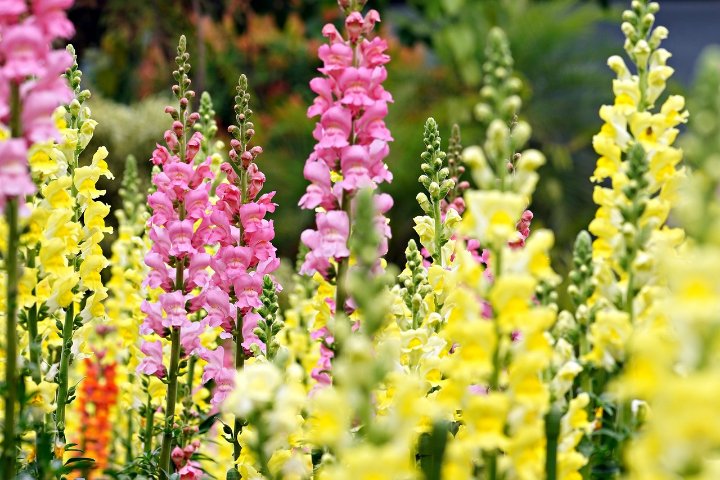
Snapdragons boast tall spikes that come in various colors, bringing vertical interest to potted arrangements. They thrive in cooler temperatures and can bloom from spring to fall with proper care. When warmed by the sun, children will enjoy gently squeezing the flowers to “snap” open their colorful mouths. This playful aspect adds a delightful element to your wildflower display.
Lupines (Lupinus)

Lupines are uniquely beautiful wildflowers that develop dense clusters of striking blooms in shades of blue, purple, and white. These plants can thrive in pots and attract both pollinators and benevolent insects to your space while creating a lovely focal point in your containers. Their tall stature adds depth and dimension to rustic arrangements, creating a robust display that stands out among shorter flowers.
Coreopsis (Coreopsis tinctoria)
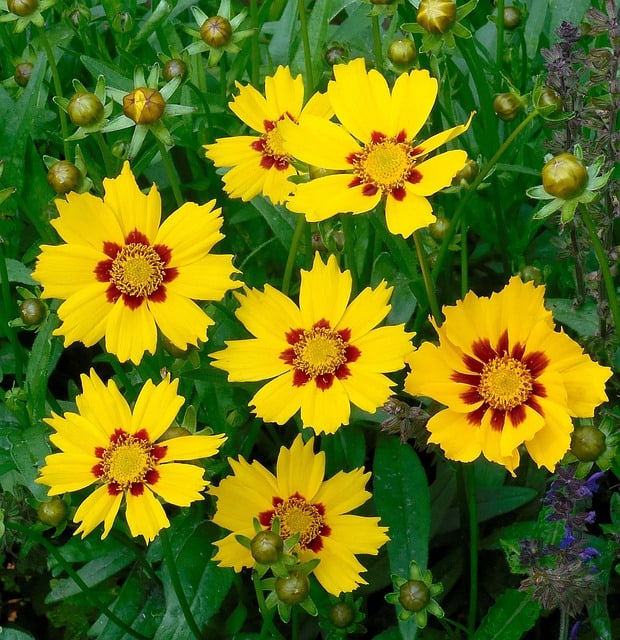
Known as tickseed, this wildflower is both vibrant and easy to grow. Coreopsis flowers prefer full sun and bloom all summer long, rewarding you with a continuous array of golden blooms. They are drought-tolerant once established, making them an excellent choice for a drought-friendly container garden, while their vivid contrasting colors work beautifully against greens or other flowers.
Anemones (Anemone coronaria)
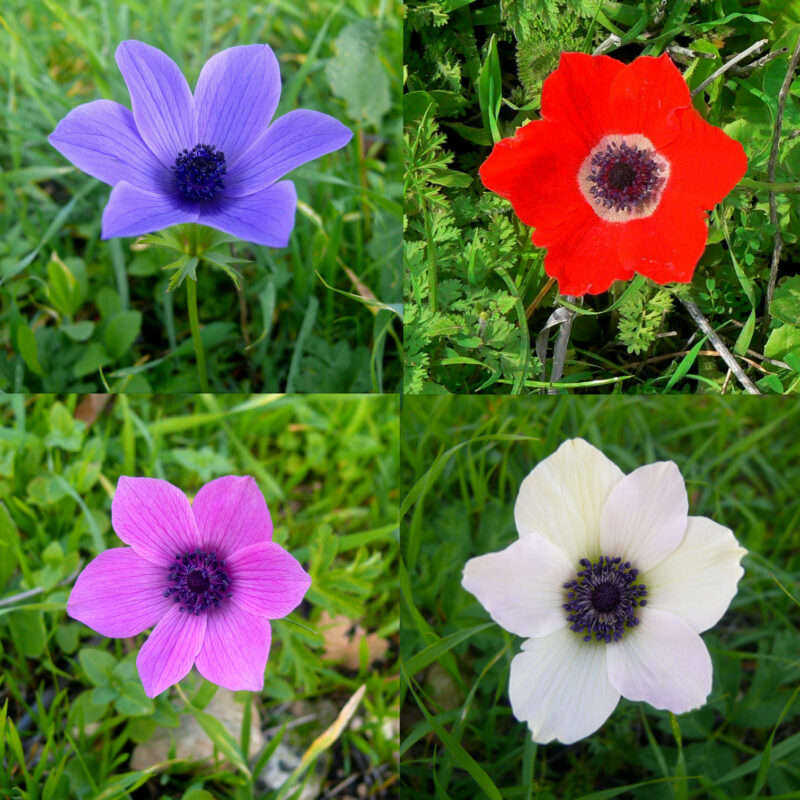
Anemones are known for their bold colors and striking forms. As they thrive in cool weather, they can create dramatic displays in pots during spring or fall. Their distinctive petals and delicate appearance add elegance to your arrangements, and they fare well in partial shade. These perennials will reward your efforts year after year, bringing both beauty and longevity to your wildflower collection.
Blanket Flower (Gaillardia)

With its bright red and yellow petals, the Blanket Flower is a true showstopper. It’s drought-resistant and thrives in pots, making it a wonderful option for sunny patios or balconies. This flower attracts butterflies, making it a delightful addition to your garden. As a bonus, the cheerful bloom enjoys extended flowering periods, ensuring a vibrant display from late spring through early fall.
Bee Balm (Monarda)

Bee Balm produces red, purple, or white flowers known to attract honeybees and butterflies. This wildflower loves moisture, making it suitable for pots that are watered regularly. Beyond its visual appeal, Bee Balm’s fragrance can add aromatic beauty to your garden, drawing in not just pollinators but also the occasional curious human.
Evening Primrose (Oenothera)
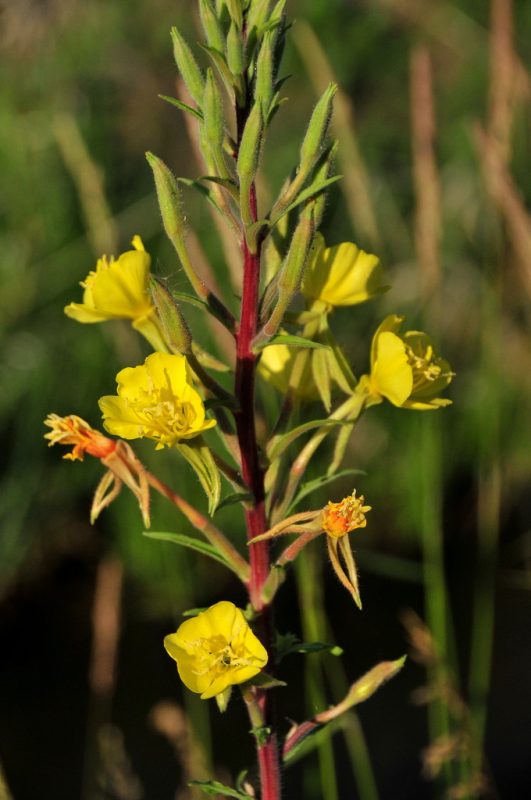
These lovely yellow flowers bloom in the evening, releasing their sweet fragrance at twilight. Their flowers open sequentially, creating a cascading effect as they bloom in the warmer evening hours. Their unique growing habit adds enchanting charm to your wildflower pots and can enhance night-time garden enjoyment.
Create A Planting Schedule To Grow Wildflowers
Before you dive deep into planting, it’s essential to establish a timeline. Consider your local climate and the ideal seasons for planting your selected wildflowers. For example, early spring is typically a great time to sow seeds for warm-weather blooms, while late summer may be suitable for fall-flowering species. This strategic approach ensures that you’re planting at an ideal time for germination and growth, resulting in healthier flowers that respond well to their environment.
Plant The Wildflower Seeds
With your seeds ready, it’s time to plant. Read the seed packet instructions for specific sowing depths and spacing recommendations. As a general rule, small seeds should be sown at a depth of about two times their size, while larger seeds may require slightly deeper planting. Sprinkle the seeds evenly across the soil and lightly cover them with potting mix. Be mindful not to crowd the seeds, as overcrowding can lead to competition among seedlings later on.
Water Your Potted Wildflowers Properly
After planting, it’s essential to give your seeds a good drink. Water them gently but thoroughly to ensure they settle into the soil. Be cautious not to overwater; excess moisture can lead to damping-off disease or root rot. Throughout their growth, aim to keep the soil damp but not soggy. Monitor moisture levels, especially for smaller pots that can dry out more quickly, and adjust your watering schedule accordingly.
Place Your Potted Wildflowers In The Right Spot
Location matters for growing wildflowers. Identify a spot that matches their light requirements; full sun is typically ideal for most wildflowers, although some thrive with only partial shade. Consider the potential for wind exposure in your chosen location; providing protection from strong gusts can help your wildflowers establish a stable root system. Position your pots where other plants can provide some shelter, especially when they are young.
Thin Out Your Wildflower Seedlings
As your wildflower seeds germinate and grow, you must occasionally thin them out. Crowded seedlings compete for nutrients, moisture, and space, which can lead to weak growth. Gently remove any weaker seedlings, either by snipping them at the soil level or pulling them out carefully to avoid disturbing neighboring plants. Thinning helps the remaining seedlings get the space they need to flourish and will ultimately support a healthier final product.
Regular Maintenance For Potted Wildflowers
Routine maintenance is crucial to your wildflower’s success. Regularly check your pots for signs of moisture levels and develop a routine for watering and feeding. Remove dead or wilted flowers to encourage new growth and deter pests. Monitor for pest activity, and take action early if needed to reduce infestations. Keeping an eye on your plants will help you catch any issues before they escalate, enhancing the overall vitality of your wildflower collection.
Fertilize Your Potted Wildflowers Occasionally
While many wildflowers thrive in nutrient-poor soils, implementing an occasional feeding program can boost both health and flowering capacity. Use a balanced, slow-release fertilizer formulated for flowering plants; this promotes growth without oversaturating your soil with nutrients. A light application, per the product label, a few times during the blooming season will help nourish your plants and keep them vibrant. Remember not to over-fertilize, as this can lead to lush foliage at the expense of blooms.
Rotate The Pots For Even Growth Of Your Wildflowers
Giving your pots a gentle rotation every few weeks can help all sides of the plants receive equal sunlight. This simple act may prevent your blooms from leaning toward the light source and help ensure even growth on all sides, resulting in a more balanced appearance in your display. By regularly changing their positions, you can create a visually appealing arrangement that fully showcases the beauty of your wildflowers.
Prune And Trim Your Wildflowers As Needed
Pruning plays a vital role in maintaining the health and appearance of your potted wildflowers. Regularly trim back any dead or drooping foliage to promote airflow and prevent pests or diseases. Removing spent blooms also boosts further flowering in many species, so don’t hesitate to clip them back. Additionally, if a wildflower is particularly tall, you may need to stake it for support, helping to maintain a tidy and attractive arrangement.
Overwintering Potted Wildflowers
In colder climates, preparing your potted wildflowers for winter is essential. If possible, bring your pots indoors or into a sheltered garage or shed where temperatures are more regulated. If you choose to leave them outdoors, consider insulating your pots with materials such as burlap, bubble wrap, or even straw to help retain warmth. Grouping pots together can also minimize temperature fluctuations, making it easier for your wildflowers to survive the winter months.
Re-Pot Wildflowers When Necessary
As your wildflowers grow, they may outgrow their current containers. Monitoring for signs of root-bound plants, such as stunted growth or roots protruding from the bottom holes, is vital. If this occurs, gently remove the plant from its pot and transfer it to a larger container filled with fresh potting mix. Re-potting will allow for continued healthy growth and ensure your wildflowers receive the nutrients they need.
Mulch Your Potted Wildflowers For Moisture Retention
Applying a layer of mulch around your potted flowers helps retain moisture and regulate soil temperature. Organic materials like shredded bark, straw, or grass clippings can work effectively for this purpose. Aim for an application depth of about 1-2 inches, ensuring a few inches remain clear around the plant base to prevent rot. Well-placed mulch supports consistent moisture, reduces the need for frequent watering, and also helps suppress weeds.
Choose Companion Plants For Your Wildflowers
Pairing wildflowers with companion plants can enhance the overall health of your potted arrangement. Look for species that share similar care requirements and complement each other in growth habits. For instance, combining taller species with shorter varieties adds interest, while herbs and wildflowers can provide mutual benefits; the fragrance of herbs can distract pests from your flowers. When selecting companions, aim for a diversity of textures and colors, creating a lush, appealing setting for your blooms.
Monitor Your Potted Wildflowers For Pests And Diseases
Keep a vigilant eye for pests such as aphids, spider mites, or snails, which can plague potted wildflowers. Regularly inspect your plants for signs of infestations and act quickly if you detect any problems. Introducing beneficial insects, such as ladybugs or lacewings, can provide natural pest control, while using organic insecticidal soap can help manage issues without harming your plants or pollinators. Prioritizing a healthy environment will lead to a more fruitful and enduring wildflower garden.
Enjoy The Benefits Of Your Wildflowers
After all your diligent planting and maintaining, it’s time to sit back and enjoy your efforts. Potted wildflowers can bring a joyful touch to your environment. Take moments to revel in their fragrant blooms, observing the intricate details and the delightful pollinators they attract. Sit outside with a cup of coffee or tea and immerse yourself in the beauty of your carefully cultivated space. This connection with nature can provide stress relief and joy in even the busiest of lifestyles.
Experiment With Colour Combination
One of the most enjoyable aspects of planting wildflowers is the freedom to mix and match colors and shapes. Experiment with complementary hues, bright contrasts, and varying flower shapes to create dynamic displays. A container filled with purple, yellow, and white blooms can create a stunning effect, especially when planted with an array of textures. Try different pairings and shifts in your planting combinations over time to discover what resonates with your personal aesthetic, enhancing the visual appeal of your pots.
Enjoy Seasonal Changes
Wildflowers bring the changing seasons to life. Witness how your potting creations evolve from the first blush of spring growth to the radiant hues of summer and the warm tones of autumn. Regularly refreshing your pots with seasonal blooms allows you to experience the full spectrum of beauty nature has to offer. As plants die back in winter, you’ll have the opportunity to reflect on the cycle of life in your garden, allowing for a deeper connection to nature and a sense of reward for your gardening efforts.
Why Grow Wildflowers In Pots?
Space-Saving
One of the greatest advantages of growing wildflowers in pots is their ability to save space. If you live in an apartment, have a small patio, or want to add colorful accents to a balcony, potted wildflowers offer an ideal solution. You can select various container sizes to suit your available space, allowing you to create beautiful arrangements wherever you like. For instance, a small balcony can accommodate several pots of varying heights to create vertical interest, or a series of window boxes can line your railings, creating a lush environment. This flexibility maximizes your gardening potential and gives you the chance to green up even the most limited of spaces.
Easy Maintenance
Wildflowers are generally low-maintenance plants, and growing them in pots can simplify the care process. Containers can be easier to manage than garden beds, as they require less weeding and can be moved for optimal sunlight. The confined space of a pot helps limit weed growth, meaning you can enjoy your blooms without spending hours in tedious weeding. Routine tasks such as watering and fertilizing can be done with greater ease, and it’s simpler to monitor the health of the plants when they are in a contained environment.
Portable Beauty
Potted wildflowers bring portability to your gardening experience. You can easily move your pots to follow the sun throughout the day, ensuring that your plants receive the optimum amount of light. Additionally, if you’re preparing for a gathering or event, simply reposition your floral displays to create an inviting atmosphere where needed. The ability to rearrange your space quickly transforms how you can use your garden or balcony, and allows you to create seasonal displays or thematic arrangements with ease.
Potted Wildflowers Attract Pollinators
A wonderful benefit of growing wildflowers is their ability to attract a range of pollinators, such as bees, butterflies, and hummingbirds. These insects play a crucial role in our ecosystems and are essential for the pollination of many fruits and vegetables. By setting up pots of wildflowers, you’re creating little oases that support these important creatures, especially in urban environments where natural habitats are often scarce. Placing different types of wildflowers in close proximity can also help boost biodiversity within your balcony or garden space, providing various resources for insects throughout blooming cycles.
Seasonal Flexibility
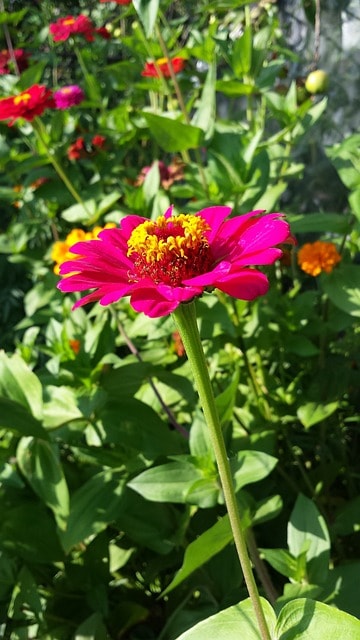
One of the joys of container gardening is the ability to adapt to the seasons. You can create seasonal displays by changing out the wildflowers or adjusting your potting techniques. For example, early spring can be dedicated to hardy, cool-weather flowers, while summer can showcase vibrant heat-loving species. Fall arrangements can feature rich, earthy tones with seasonal flowers, while winter can allow for evergreen containers or holiday-themed arrangements. This strategic approach allows you to maintain interest throughout the entire year, showcasing the shifting beauty of nature.
Pest Control
Growing wildflowers can actually help manage pests in your garden or home. Certain wildflower species are known to attract beneficial insects that prey on harmful pests. For example, ladybugs are drawn to plants like yarrow or cosmos, while hoverflies are attracted to marigolds, helping control aphid populations. By planting these wildflowers in pots and placing them strategically throughout your space, you create a healthier environment for both your plants and surrounding wildlife. Additionally, interspersing native species can promote a more robust ecosystem that naturally curtails pest populations.
Versatility
Wildflowers come in various shapes, sizes, and colors, making them exceptionally versatile. You can experiment with vertical gardens, hanging pots, and combinations of different-sized containers to create dynamic displays that suit your style. Compiling diverse wildflower species in a single pot leads to a stunning bouquet effect, while arranging several pots of the same flower can create a cohesive look that stands out. This versatility allows you to express your creativity and personalize your gardening experience while adapting to changing tastes or seasonal themes.
Creative Display
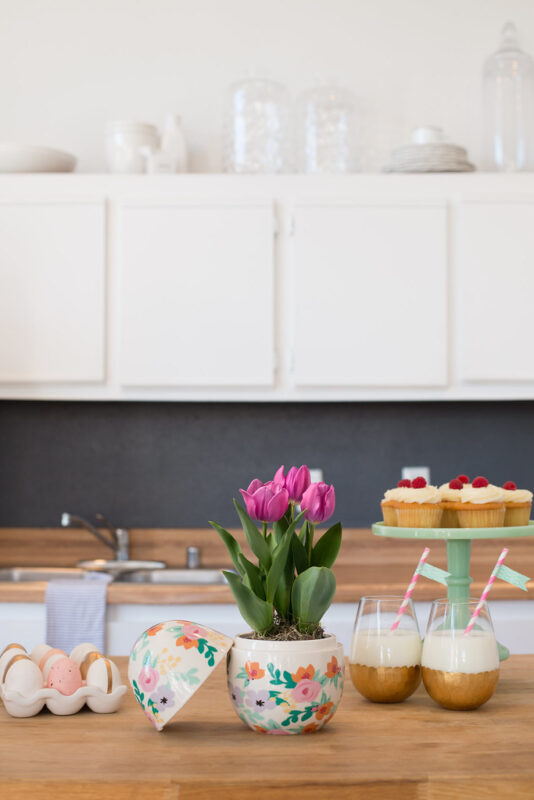
There’s something uniquely charming about a pot of wildflowers. You can experiment with different pot shapes, sizes, and colors, mixing and matching according to your taste. Imagine rustic terracotta pots filled with vibrant blossoms, or sleek modern containers featuring a minimalist design. You can take advantage of unusual containers like reclaimed wood, vintage teacups, or decorative planters to add extra character to your displays. The creative opportunities with wildflower pots are endless, allowing you to enhance your home’s aesthetic continuously and bring a personal touch to your outdoor (or indoor) environment.
Enhanced Soil Quality
Growing wildflowers in pots can benefit soil health. Wildflowers typically have deep root systems that help improve soil condition as they grow. Their roots can aerate the soil, allowing nutrients and water to penetrate more deeply, which subsequently supports the health of the plants. Furthermore, many species can improve nutrient cycling within the potting mix, contributing beneficial organic matter to the soil, creating a vibrant ecosystem within your pots. A healthy potting environment promotes healthier flora, resulting in more robust flowers over time.
Less Weeding
Weeding is one of the more tedious tasks associated with traditional gardening. With potted wildflowers, you can significantly minimize the amount of weeding required. Containers can be filled with high-quality potting soil, reducing the risk of weed seeds. Furthermore, with good pot selection and proper upkeep, the limited space can help suppress weed growth. Regular monitoring of the pots allows you to address any unexpected weeds quickly, which means you’ll spend less time on manual labor and more time enjoying the beauty of your blooming flowers.





